Appliances
The latest Appliances breaking news, comment, reviews and features from the experts at T3
Explore Appliances
-

Govee’s new ice maker looks like it comes from the future – but the price will shock you
2026 is the year of the ice maker!
By Bethan Morgan Published
-
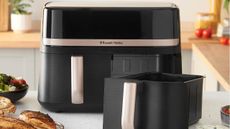
Got an air fryer for Christmas and don’t know where to start? Here’s exactly what to do next
You'll be an expert in no time
By Lizzie Wilmot Published
-

There's one kitchen gadget I’m relying on for my New Year’s resolution – and it’s 20% off right now
Could this inspire you as well?
By Lizzie Wilmot Published
-

I’m an appliance expert – here are 7 kitchen trends I hope to see in 2026
Are AI kitchens here to stay? Here are my kitchen trend predictions for 2026
By Bethan Morgan Published
-

3 must-have kitchen appliances to look out for in the Boxing Day sales
Missed out at Christmas? All is not lost
By Lizzie Wilmot Published
-

This Jamie Oliver air fryer hack will massively upgrade your Christmas leftovers
Take your Boxing Day leftovers to the next level with this Jamie Oliver-recommended hack
By Bethan Morgan Published
-

3 Christmas foods you should never cook in an air fryer
Just because you can cook Christmas lunch in an air fryer, doesn’t mean you should…
By Bethan Morgan Published
-
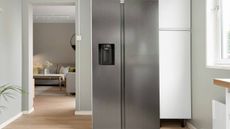
3 tips for organising your fridge before Christmas, according to appliance experts
How to keep your fridge in top condition during the festive season
By Bethan Morgan Published
-

Your Samsung smart fridge is getting a Google Gemini upgrade
Samsung announces its CES 2026 plans, including an exciting Gemini debut
By Bethan Morgan Published
-

Expert reveals the unexpected reason why you should never dry towels in the bathroom
It’s a major factor behind why dehumidifiers are so needed
By Lizzie Wilmot Published
-

Can I dry clothes with a dehumidifier? Yes, and here’s how to get the best results
How to dry your clothes using a dehumidifier
By Bethan Morgan Published
-

11 best Christmas gift ideas for budding chefs and home cooks
Upgrade your kitchen with these luxury Christmas gifts
By Bethan Morgan Published
-

Dyson Hot+Cool HF1 review: the 2-in-1 appliance that's earned a spot on my bedside table
Could this be the best bedside fan heater we've seen?
By Lizzie Wilmot Published
-
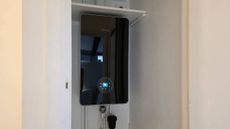
I had a new boiler installed for winter and it was so much easier than I expected
My old combi was struggling so BOXT swapped it for a beefy new Worcester Bosch in just five hours
By Lee Bell Published
-

15 best Christmas gift ideas for coffee lovers, baristas and latte art beginners
These are the best gifts to give someone who loves all things coffee
By Bethan Morgan Published
-

iRobot files for bankruptcy – what this means for your Roomba robot vacuum
After 35 years, iRobot has filed for bankruptcy
By Bethan Morgan Published
-

15 retro kitchen appliances that would make the perfect gift this Christmas
Some are even still discounted after Black Friday!
By Lizzie Wilmot Published
-

Salter just dropped a new kitchen appliance range – and it has every gadget you could possibly imagine
Introducing the Alchemy collection...
By Lizzie Wilmot Published
-
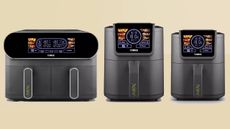
This Tower air fryer uses AI to calculate cooking temperature – and it’s super affordable
Tower’s new AIRX air fryer has built-in AI that’s genuinely useful
By Bethan Morgan Published
-

Cuisinart Blast & Go Portable Blender review: easy, convenient and surprisingly premium
Here's my take on Cuisinart's latest kitchen gadget
By Lizzie Wilmot Published
-
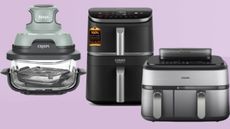
3 best air fryer launches from 2025 you should know about – if you don't already
My favourite air fryers from the year, and why they deserve a place in your kitchen
By Bethan Morgan Published
-

Best kettle 2025: the highest-ranking multi-temp and standard models
The ultimate vessel for a perfect cuppa
By Lizzie Wilmot Last updated
-
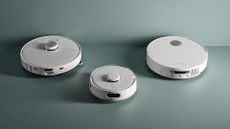
Best robot vacuum cleaner 2025: hands-free cleaning while you're out
Find the best robot vacuum cleaners from top brands including Roborock, iRobot, EZVIZ, Eufy and SwitchBot
By Lizzie Wilmot Last updated
-

Best bean-to-cup coffee machine 2026: top picks for coffee lovers
Find the best bean-to-cup coffee machines that incorporate a grinder, espresso maker and milk frother in one handy box
By Bethan Morgan Last updated
-

Best fan 2026: cooling gadgets for summertime and all-year-round relief
Find the best fans – desktop, tower, evaporative, you name it – from Dyson, Meaco and many more
By Bethan Morgan Last updated
-

Cuisinart takes on Breville with new smart toaster that saves your toast settings
Cuisinart debuts two new toasters including smart and classic models
By Bethan Morgan Published
-

Best electric barbecue 2026: indoor and outdoor grills for all-year-round cooking
Find the best all-in-one electric barbecues and grills with plug-and-play convenience
By Bethan Morgan Last updated
-
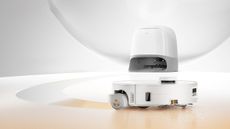
Roborock unveils its first-ever robot vacuum cleaner with a roller mop
It's also the priciest model in the Curv series so far
By Lizzie Wilmot Published
-

Shark FreeStyle Pro Cordless Upright Vacuum review: simplicity is the key to this vacuum’s success
Shark’s FreeStyle Pro is a commendable cordless vac that ticks many boxes – but not all
By Bethan Morgan Published
